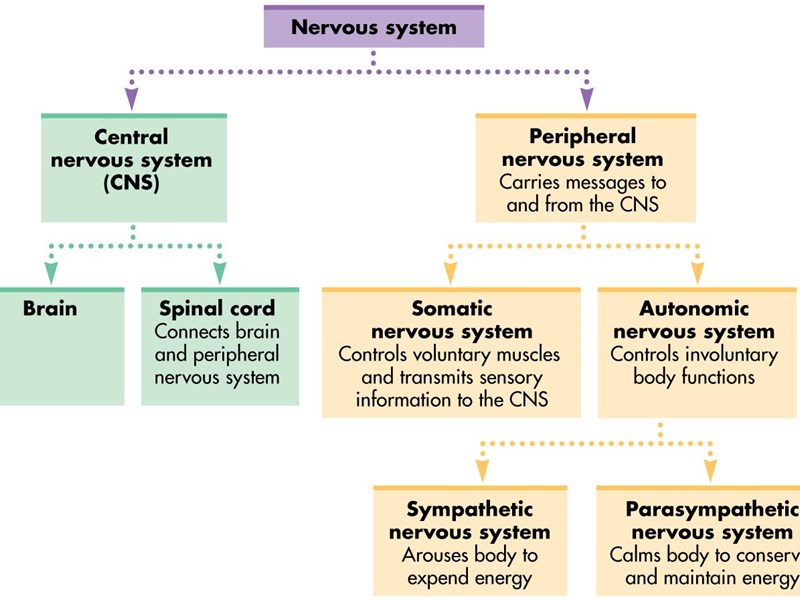
Chronic stress and anxiety is unfortunately on the rise during the pandemic. As a consequence, this can create an imbalance in the way the body’s nervous system works leading to many unwanted and painful symptoms.
Back To Basics
The nervous system is a complex network of nerves that help send messages from the brain to the body and back again.
See the diagram above for a breakdown of the Nervous system.
The main two we will focus on are the Sympathetic and Parasympathetic components.
The Sympathetic nervous system turns on when the body thinks it is in danger or stressed (real or perceived). Sometimes referred to as the “Fight or Flight” response. For the short-term, this is normal and protective but can be detrimental when it is continually “on”.
Contrastingly, the Parasympathetic nervous system kicks in when the body is relaxed and calm. It allows the body to heal, rest, digest and grow.
Sympathetic Dominance
Like a see-saw, the body tries to strike a delicate balancing act between engaging the sympathetic and parasympathetic nervous system.
When the body senses intense danger or stress, the sympathetic nervous system (our in-built survival/safety mechanism) switches on. The body diverts all its energy towards the muscles and alertness, preparing it to run away or fight. Therefore, many bodily functions including digestion, immunity, healing and reproduction are suppressed. When this system functions appropriately, it allows the body enough energy on a short term basis to get out of crises to ensure its survival. Unfortunately, with modern life challenges the sympathetic nervous system is being switched on more frequently and remains on for longer periods of time. This is known as Sympathetic Dominance.
Unfortunately with the body constantly on alert and having trouble winding down, there can be a decline in health and complex symptoms which may include:
- Fatigue
- Tight shoulder, neck, leg muscles
- Anxiety and depression
- Regular headaches
- Digestive problems
- Hormonal issues
- Sensitivity to lights and sound
- Poor sleep
- Thyroid imbalances
- Irritability
Reversing the overdrive
To try and switch on the parasympathetic nervous system and bring the body back into balance, some active steps can be taken.
- Meditation
- Yoga and stretches
- Reduce screen time
- Walking
- Slow and deep breathing exercises
- Spending time outside especially in nature
- Drink more water
- Epsom salt baths to relax muscles
- Awareness of proper posture and work ergonomics
- Have a well balanced diet – reduce sugar intake, avoid inflammatory foods, and increase fruit and vegetables consumption
- Slow down – prioritise activities and organise schedules accordingly
- Practice mindfulness
- Stay well adjusted!






